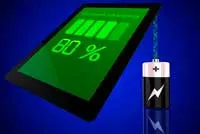 To resolve the problem of counterfeit wireless chargers - which could cause power surges that fry a device’s circuitry – researchers from MIT’s Microsystems Technology Laboratories have built a chip that blocks attempts to wirelessly charge a device’s battery unless the charger first provides cryptographic authentication.
To resolve the problem of counterfeit wireless chargers - which could cause power surges that fry a device’s circuitry – researchers from MIT’s Microsystems Technology Laboratories have built a chip that blocks attempts to wirelessly charge a device’s battery unless the charger first provides cryptographic authentication.
The same technology also solves another problem with wireless chargers. When two devices share a single charger, if they are different distances from the charger’s electrical coil, their charging rates can vary, to the extent where one device might charge fully while the other remains virtually uncharged.
In the same way that the researchers’ chip can block power transfer from an unauthorised charger, it can slow the power transfer to a device nearer the charging coil, ensuring more equitable charge rates.
In a wireless charging system, both the charger and the target device contain metal coils. An alternating current passing through the charger’s coil produces a magnetic field, which induces a current in the device’s coil. The rate at which the current in the charger alternates defines a frequency, much like the frequency of a radio transmission. The device’s coil must be ‘tuned’ to the transmission frequency in order to receive power.
The MIT researchers’ created a more compact and efficient circuit for tuning the frequency of the receiving coil. Instead of a single coil attached to a bank of capacitors, the MIT researchers’ design uses a pair of coils attached to one capacitor each - no switches required.
In the researchers’ chip, the main coil is much larger than the auxiliary coil. When a current is flowing through the auxiliary coil, it produces a magnetic field that changes the tuning frequency of the main coil.
When the resistance in the auxiliary coil’s circuit is high, the magnetic field is weak, and the detuning is less drastic. That permits other, more distant devices to harvest more of the power transmitted by the charger coil.
The chip also uses an authentication technique called elliptic curve cryptography. Using publicly available information, the chip can generate - and verify the response to - a question that only a charger with valid private information can answer. The chip doesn’t need to store a secret key of its own.
Elliptic curve cryptography is a well-established technique but the team found a way to simplify the encryption circuit so that it takes up less space on the chip and consumes less power.
Author
Peggy Lee
Source: www.newelectronics.co.uk

